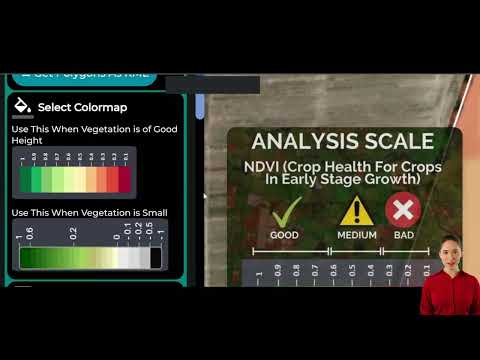Comprehensive Guide: Navigating Crop Insurance Policies and Agricultural Risk Management Strategies in the United States

“Over 80% of U.S. crop acreage is protected by federal crop insurance, covering more than 100 different crops.”
In today’s ever-changing agricultural landscape, navigating crop insurance policies and implementing effective risk management strategies has become more crucial than ever for farmers across the United States. As we delve into this comprehensive guide, we’ll explore the intricate world of agricultural risk management, providing you with valuable insights and practical strategies to safeguard your farm’s future.
From the latest updates in farm revenue protection to innovative approaches in natural disaster relief for agriculture, we’ll cover a wide range of topics essential for modern farming operations. Whether you’re a seasoned producer or just starting out, this guide will equip you with the knowledge needed to make informed decisions about crop insurance, risk mitigation, and sustainable farming practices.
Understanding Crop Insurance Policies
Crop insurance is a vital tool for farmers to protect their investments and livelihoods against unpredictable events such as natural disasters, market fluctuations, and pest infestations. In the United States, the federal crop insurance program is administered by the USDA’s Risk Management Agency (RMA) and offers a variety of policy options to suit different farming operations.
Types of Crop Insurance Policies
- Multi-Peril Crop Insurance (MPCI): Covers loss of crop yields from all types of natural causes.
- Yield Protection (YP): Provides protection against yield losses below a specified guarantee.
- Revenue Protection (RP): Protects against revenue loss due to yield decreases, price declines, or a combination of both.
- Whole-Farm Revenue Protection (WFRP): Offers coverage for all commodities on the farm under one policy.
To help you better understand these options, we’ve compiled a comprehensive comparison table:
| Policy Type | Coverage Level | Insured Risks | Eligibility Criteria | Typical Premium Range | Indemnity Payment Structure | Pros | Cons |
|---|---|---|---|---|---|---|---|
| Multi-Peril Crop Insurance (MPCI) | 50-85% | Drought, flood, pests, disease | Most crops eligible | 2-10% of insured value | Based on yield loss | Comprehensive coverage | Higher premiums |
| Yield Protection (YP) | 50-85% | Yield losses from natural causes | Major field crops | 1-5% of insured value | Based on yield shortfall | Lower premiums | No price protection |
| Revenue Protection (RP) | 50-85% | Yield and price risks | Major field crops | 3-8% of insured value | Based on revenue shortfall | Price and yield protection | Higher premiums than YP |
| Whole-Farm Revenue Protection (WFRP) | 50-85% | Revenue losses for entire farm | Diversified farms | 3-7% of insured revenue | Based on overall revenue loss | Covers all commodities | Complex documentation |
Understanding these policy types is crucial for selecting the right coverage for your farm. It’s important to consult with a crop insurance agent to determine which policy best suits your specific needs and risk profile.
Farm Revenue Protection Strategies
Protecting farm revenue goes beyond just crop insurance. A comprehensive approach to risk management includes diversification, hedging, and utilizing government programs. Here are some key strategies to consider:
- Crop Diversification: Planting a variety of crops can help mitigate the risk of total loss from a single crop failure.
- Forward Contracting: Locking in prices for a portion of your crop before harvest can provide price stability.
- Futures and Options: These financial instruments can be used to hedge against price fluctuations.
- Participation in Government Programs: Programs like the Agriculture Risk Coverage (ARC) and Price Loss Coverage (PLC) can provide additional revenue protection.
Farmonaut’s web application offers advanced tools for crop monitoring and risk assessment, which can be invaluable in implementing these strategies effectively.
Natural Disaster Relief for Agriculture
When natural disasters strike, farmers need to be prepared with both insurance coverage and knowledge of available disaster relief programs. The USDA offers several programs to assist farmers in times of crisis:
- Emergency Conservation Program (ECP): Provides funding for farmers to rehabilitate farmland damaged by natural disasters.
- Noninsured Crop Disaster Assistance Program (NAP): Offers financial assistance to producers of non-insurable crops when low yields, loss of inventory, or prevented planting occur due to natural disasters.
- Livestock Indemnity Program (LIP): Compensates livestock producers for livestock deaths in excess of normal mortality caused by adverse weather.
It’s crucial for farmers to document all damages and losses thoroughly to facilitate claims and assistance applications. Farmonaut’s API can provide valuable data on weather patterns and crop health, which can be instrumental in this documentation process.
Specialty Crop Insurance and Urban Farming Coverage
As the agricultural landscape diversifies, so do insurance options. Specialty crop insurance and coverage for urban farming operations are becoming increasingly important.
Specialty Crop Insurance
Specialty crops, including fruits, vegetables, tree nuts, and nursery crops, often require tailored insurance solutions. The RMA has expanded coverage options for these crops, including:
- Whole-Farm Revenue Protection (WFRP) for diversified farms
- Crop-specific policies for high-value crops like almonds, citrus, and grapes
- Dollar Amount of Insurance (DAI) policies for nursery crops
Urban Farming Insurance
Urban agriculture is on the rise, and with it comes the need for specialized insurance coverage. Urban farmers should consider:
- Property insurance for structures and equipment
- Liability coverage for farm visitors and product sales
- Specialized policies for vertical farming and controlled environment agriculture
“The USDA’s Risk Management Agency administers crop insurance programs that protect against $100 billion in crop value annually.”
For both specialty crop and urban farmers, it’s essential to work with insurance providers who understand the unique risks and challenges of these operations. Farmonaut’s API Developer Docs can provide valuable insights for insurance companies looking to assess risks in these specialized farming sectors.
Agricultural Program Changes and Updates
Staying informed about changes in agricultural programs is crucial for effective risk management. Recent updates include:
- Expanded Coverage for Organic Crops: The RMA has expanded organic price elections and contract price addendums for more crops.
- Climate-Smart Agriculture Initiatives: New programs incentivize practices that reduce greenhouse gas emissions and increase carbon sequestration.
- Improvements to Whole-Farm Revenue Protection: Changes have been made to make WFRP more accessible to diversified operations.
Farmers should regularly consult with their crop insurance agents and stay updated through USDA resources to ensure they’re taking advantage of the latest program offerings.
Crop Loss Prevention Strategies
Preventing crop loss is a key component of risk management. Implementing effective strategies can significantly reduce the likelihood of losses and the need for insurance claims. Some essential strategies include:
- Integrated Pest Management (IPM): Combining biological, cultural, physical, and chemical tools to manage pests effectively.
- Precision Agriculture: Using technology to optimize inputs and manage crops more efficiently.
- Soil Health Management: Implementing practices like cover cropping and reduced tillage to improve soil structure and fertility.
- Water Management: Utilizing efficient irrigation systems and water conservation techniques.

Implementing these strategies not only helps prevent crop losses but can also lead to more favorable insurance terms and premiums.  Farmonaut’s Android app provides real-time crop health monitoring, helping farmers implement these strategies more effectively.
Farmonaut’s Android app provides real-time crop health monitoring, helping farmers implement these strategies more effectively.
Sustainable Farming Practices and Risk Mitigation
Adopting sustainable farming practices not only benefits the environment but also plays a crucial role in long-term risk mitigation. These practices can improve soil health, increase resilience to weather extremes, and potentially reduce insurance premiums. Key sustainable practices include:
- Conservation Tillage: Reducing soil disturbance to improve soil structure and water retention.
- Crop Rotation: Diversifying crops to break pest cycles and improve soil fertility.
- Agroforestry: Integrating trees and shrubs into crop and animal farming systems.
- Precision Nutrient Management: Optimizing fertilizer use to reduce costs and environmental impact.
Many insurance providers now offer incentives for farmers implementing sustainable practices. It’s worth discussing these options with your insurance agent to see how they can benefit your operation.
Agritech Solutions for Risk Mitigation
The integration of technology in agriculture has opened up new avenues for risk mitigation. Agritech solutions can provide farmers with valuable data and insights to make informed decisions and reduce risks. Some key technologies include:
- Satellite Imagery and Remote Sensing: For monitoring crop health and identifying issues early.
- Internet of Things (IoT) Sensors: For real-time monitoring of soil moisture, temperature, and other critical factors.
- Artificial Intelligence and Machine Learning: For predictive analytics on crop yields, pest outbreaks, and weather patterns.
- Blockchain Technology: For improving traceability and transparency in the supply chain.
 Farmonaut’s iOS app leverages these technologies to provide farmers with actionable insights for better risk management.
Farmonaut’s iOS app leverages these technologies to provide farmers with actionable insights for better risk management.
Understanding Policy Endorsements and Commodity Price Protection
Policy endorsements can provide additional layers of protection to your crop insurance policy. These endorsements can be tailored to address specific risks or provide enhanced coverage. Some common endorsements include:
- Prevented Planting Coverage: Provides coverage when you’re unable to plant due to an insured cause of loss.
- Replant Coverage: Covers the cost of replanting if the initial planting fails due to an insured cause of loss.
- Supplemental Coverage Option (SCO): Provides additional coverage for a portion of your deductible.
Commodity price protection is another crucial aspect of risk management. Strategies for price protection include:
- Hedging: Using futures and options contracts to lock in prices.
- Forward Contracting: Agreeing on a price with buyers before harvest.
- Participation in Government Programs: Such as the Price Loss Coverage (PLC) program.
It’s important to work closely with your insurance agent and potentially a commodity marketing specialist to develop a comprehensive price protection strategy.
Reporting and Managing Farm Challenges
Accurate and timely reporting is essential for effective risk management and insurance claims. Farmers should:
- Keep detailed records of planting dates, inputs, yields, and any losses.
- Report any potential losses to their insurance provider immediately.
- Maintain photographic evidence of crop conditions and any damage.
- Use digital tools to streamline record-keeping and reporting processes.
 Farmonaut’s web application offers tools for efficient record-keeping and reporting, which can be invaluable in managing farm challenges and insurance claims.
Farmonaut’s web application offers tools for efficient record-keeping and reporting, which can be invaluable in managing farm challenges and insurance claims.
Leveraging Government Programs for Risk Management
In addition to crop insurance, the U.S. government offers several programs to help farmers manage risks and stabilize income. Key programs include:
- Agriculture Risk Coverage (ARC): Provides income support tied to historical base acres of covered commodities.
- Price Loss Coverage (PLC): Offers price protection for covered commodities.
- Dairy Margin Coverage (DMC): A voluntary risk management program for dairy producers.
- Conservation Reserve Program (CRP): Provides rental payments to farmers who agree to remove environmentally sensitive land from agricultural production.
Farmers should carefully evaluate these programs and consider how they can complement their crop insurance coverage and overall risk management strategy.
Frequently Asked Questions
- What is the deadline for purchasing crop insurance?
The sales closing date varies by crop and region. It’s typically before the planting season begins. Check with your local RMA office or insurance agent for specific dates. - How are crop insurance premiums calculated?
Premiums are based on factors such as the crop type, coverage level, yield history, and location. The federal government subsidizes a portion of the premium to make it more affordable for farmers. - Can I insure organic crops?
Yes, the RMA offers organic price elections for many crops. Organic producers can also use the contract price addendum for crops grown under guaranteed contracts. - What is prevented planting coverage?
Prevented planting coverage provides protection when you’re unable to plant an insured crop due to an insured cause of loss, such as excessive rainfall or flooding. - How do I file a crop insurance claim?
Contact your insurance agent as soon as you notice a loss. They will guide you through the claims process, which typically involves an adjuster inspecting the damage and reviewing your records.
Conclusion
Navigating crop insurance policies and implementing effective risk management strategies are essential skills for modern farmers. By understanding the various insurance options, leveraging government programs, adopting sustainable practices, and utilizing agritech solutions, farmers can build resilient operations capable of weathering the many challenges faced by the agricultural industry.
Remember, effective risk management is an ongoing process that requires regular review and adjustment. Stay informed about policy changes, market trends, and technological advancements to ensure your risk management strategy remains robust and effective.
For those looking to enhance their risk management capabilities with cutting-edge technology, consider exploring Farmonaut’s suite of agricultural solutions:
By staying informed, utilizing available resources, and embracing innovation, farmers can navigate the complex world of agricultural risk management with confidence, ensuring the sustainability and profitability of their operations for years to come.



